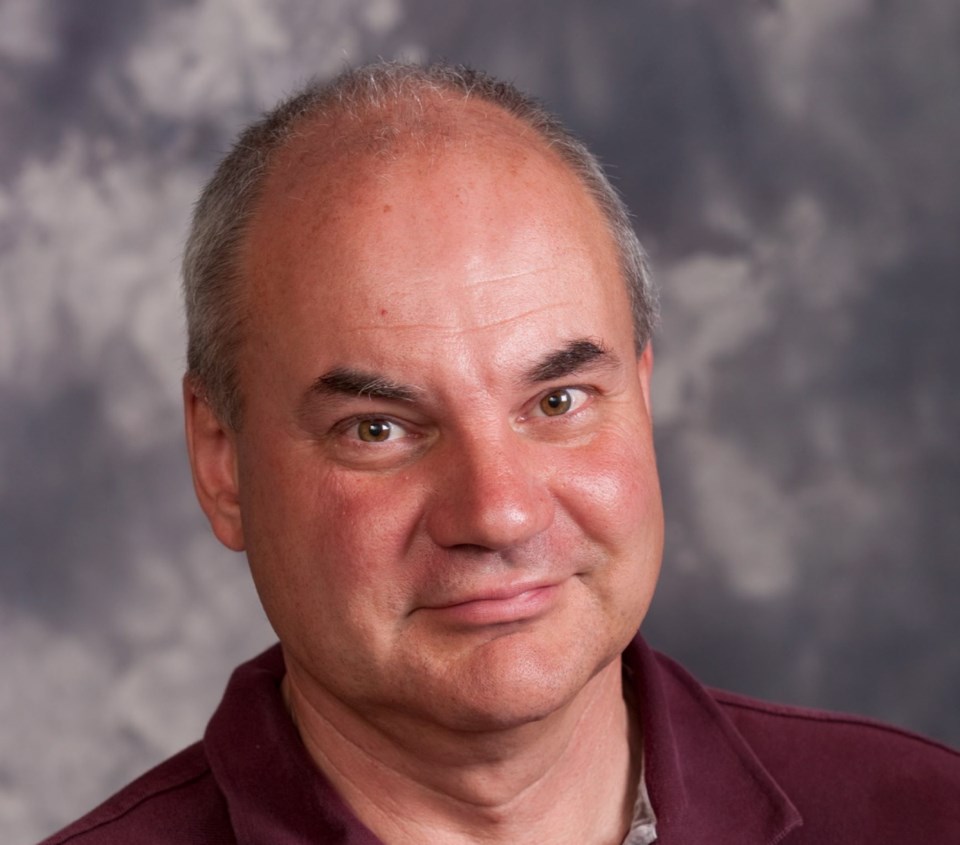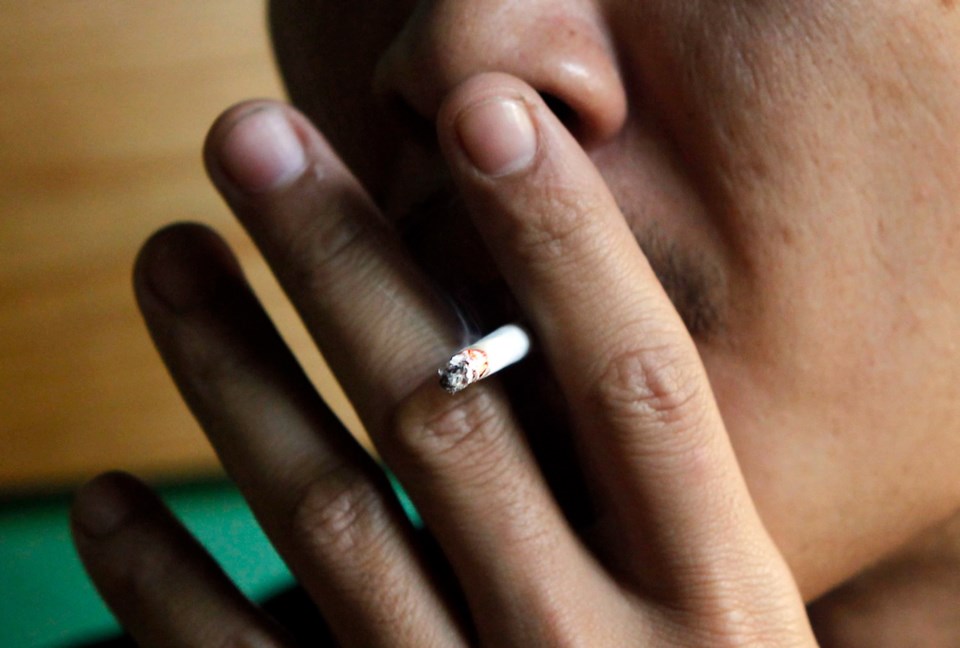We treed a smoker the other day. He was skulking outside the medical marijuana dispensary, trying to pass off his Export A as a joint, but the dogs caught wind of the tobacco and chased him up an ornamental cherry.
We thought we’d get him down by setting fire to the tree, but none of us had a lighter. Fortunately, a coughing fit halted him at the lowest set of branches, so it wasn’t hard to jump up and pull him down by the ankles. Squealed like a pig when we stapled on the ear tag and implanted the tracking device, but at least we’ll know if he tries to come back from Port Alberni.

It used to be you could relocate smokers as close as Duncan or Nanaimo, but those communities have banned cigarettes in public parks and on beaches, just like Greater Vancouver has.
The capital region hasn’t done so yet, but could take a big step in that direction today when CRD directors vote on expanding the Clean Air Bylaw.
It won’t be quite the same proposal the politicians narrowly rejected in May. This time they won’t be asked to prohibit smoking on foreshore beaches or in the remoter areas of regional parks, but the ban would still include all playgrounds, municipal parks and high-use public spaces — places like Centennial Square and the beaches at Elk and Thetis lakes.
The change would also expand the no-smoking zone around doors and windows from three metres to seven, the distance within which the Canadian Cancer Society says second-hand smoke is dangerous.
There’s the key question for politicians: Is the bylaw change really intended to shield non-smokers, primarily children, from the evils of tobacco, or is it an intrusion on individual rights, a back-door attempt to stub out a practice that, while ranked somewhere between breaking wind and punching a nun on the social acceptability scale, is still perfectly legal?
If it’s truly a question of non-smokers’ health, passing the ban is a no-brainer. If it’s an attempt to hound nicotine addicts into the saltchuck … well, politically, the directors could probably get away with that, too. Smokers comprise not only a smallish minority, but one with little clout.
For here, disproportionately, is who still smokes: the poor, the less-educated and the mentally ill.
The U.S. Centers of Disease Control and Prevention reported this year that people with mental illness — an estimated 46 million Americans — are 70 per cent more likely to smoke. Adults with mental illness consume 31 per cent of all cigarettes sold in the U.S.
Those who live below the poverty line are 62 per cent more likely to smoke than those who live at or above it.
The more education you have, the less probable it is that you will light up: Those with a general equivalency diploma are nine times as likely to do so as those with a post-grad degree.
You can argue whether those stats mean anti-smoking laws target the disadvantaged or protect them, but the reality is that tobacco consumption has been fenced into a ghetto, effectively made illegal by increment.
Butts were banned first on airline flights in 1989, then in indoor workplaces, then on school property, then in bars and restaurants.
The provincial government barred smoking in bus shelters or near doorways or open windows in 2008, when it also ended tobacco sales in hospitals and rec centres. Can’t fire up with a kid in the car anymore, either. Tobacconists have to paper over their windows like porn shops. Politicians no longer fear a backlash from jacking up tobacco taxes; when B.C. pushed up the price by $2 a carton Oct. 1, nary a peep of protest was heard. Kids no longer see packs of Players Light at the grocery checkout, or cigarette machines in kindergarten class* (*Alberta only).
Fifty years ago, half of Canadians smoked. Now, according to the just released Tobacco Use In Canada report, it’s down to just over 17 per cent. British Columbia has the lowest smoking rate in the country, 14.2 per cent. B.C. Stats says just 11 per cent light up in the capital region. Don’t be surprised if the smoking ban is extended today.
•••
Fancy a Thanksgiving Sunday morning stroll? Want to live like a prisoner on work release, only without the orange jumpsuit?
The Times Colonist Charity Pledge Program is still seeking volunteers to follow the runners in the Goodlife Fitness Victoria Marathon, picking up any rubbish they leave. Each team of four will patrol a two-kilometre stretch of the route before joining me at Ogden Point for the Green Walk to the finish line.
The intention is to build support for the 19 local charities in the pledge program.
If interested, please email volunteer@runvictoriamarathon.com.



